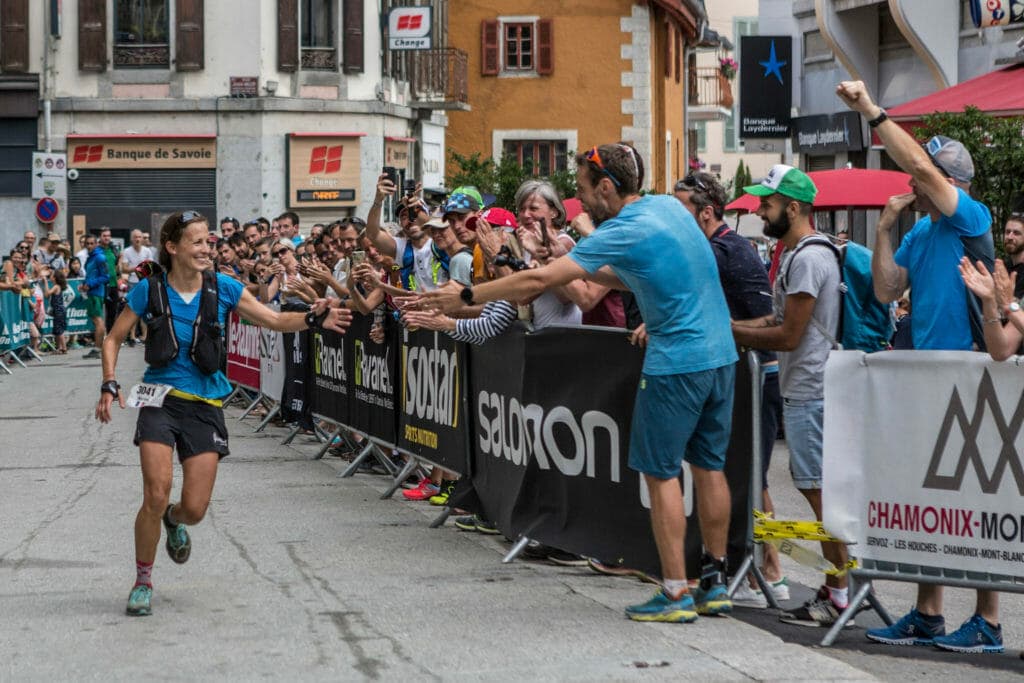

8 Tips for How to Run Your First Trail Running Race in the Alps
If you’re into trail running, chances are you’ll want to make the pilgrimage to the Alps at some point in your running career. Along with gorgeous vistas, stunning alpine lakes, and delicious tarts, the trail running is simply some of the best in the world. There’s a variety of terrain, too– from rolling pastures to jagged ridgelines and almost everything in between.
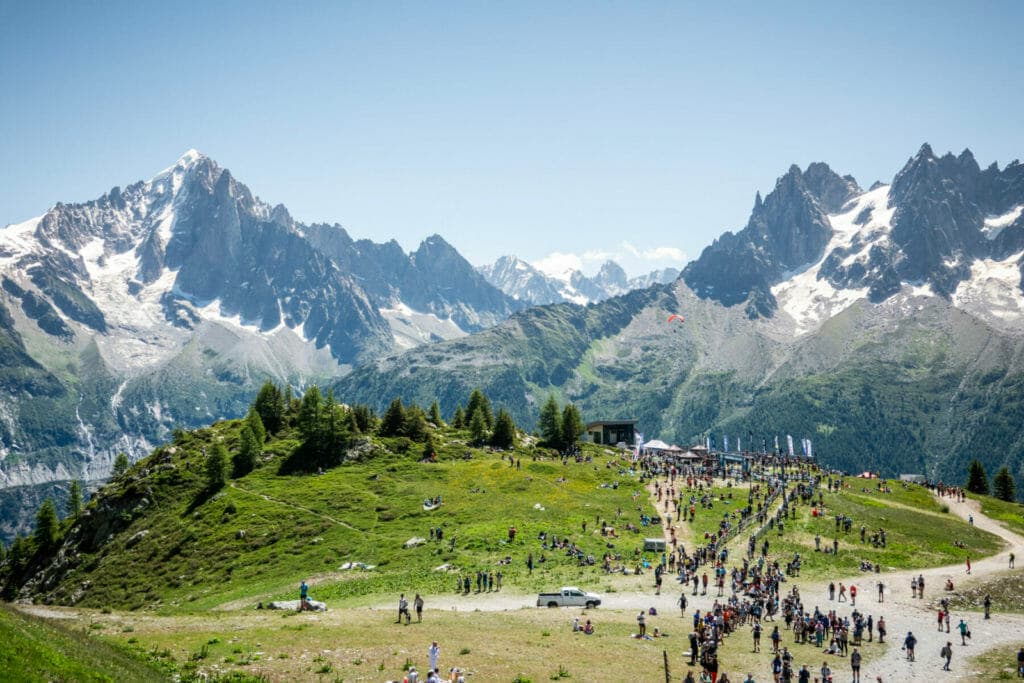
If you’re apprehensive about tackling new terrain, signing up for an Alps trail race can be a great way to encourage yourself to explore new territory. Once you get past any initial fears, it can be a lot of fun! Villages throughout the Alps take pride in hosting trail events and it shows in the enthusiastic volunteers, cheering spectators, and aid stations, that besides including all the usual trail running energy sources, often offer some produits terroir, or local products, like dried meats and cheeses. (Though sometimes those produits can be surprising. A Run the Alps guide once had fresh buttermilk at an aid station in the Swiss Alps– courtesy of the cows just a few meters away.)
Language barriers, cultural differences, and the sheer intimidation of trying to make good time over steep terrain, can make the prospect of that first race a bit daunting. To lower the intimidation factor, we’ve collected tips on how to run your first trail race in the Alps from our guides, Run the Alps trail running ambassadors, elite trail runners and Run the Alps staff. Whether you’re jumping head-first into the deep end with a big epic on technical terrain or you’re considering one of the shorter, more low-key events we equally love, we hope these hard-won suggestions will give you the confidence you need to fill out that registration form. And with luck, they might even help soothe those pre-race jitters, too!
1. Prep Your Medical Certificate
The first tip that Run the Alps founder Doug Mayer recommends is to be sure to get your medical certificate fully completed well in advance of race registration. Switzerland doesn’t require a medical certificate, Italy requires a form signed by a doctor, and as of late 2024, France has moved to an online certification process. For more information, check out this Run the Alps blog post dedicated to trail race medical certificates.
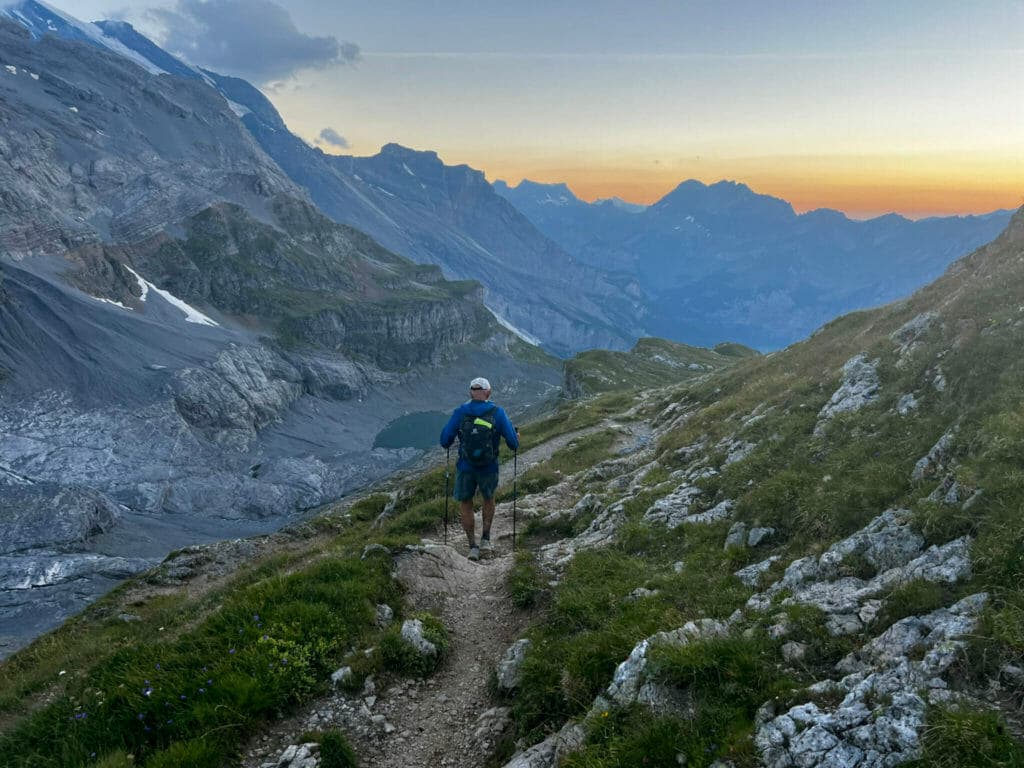
2. Focus Your Training on Hours on the Trail
“People can be very good road runners, but if you’re just not used to time or terrain, racing in the Alps can be a tough experience,” notes Kim Strom, Run the Alps content producer and co-author of Run the Alps Switzerland. When trail running in the Alps, the steep uphills and intense amount of elevation gain mean a large portion of your trail run will actually be fast hiking if you’re prepared for it, or in some cases, simply hiking.
Don’t worry, though — it’s what everyone does. You don’t have to be able to sprint up a mountain to successfully complete a trail run in the Alps and even finish with a good result. Just prepare your body to put in the time on the trails. Consider adding runs that are a set number of hours, rather than a set distance, to your weekly plan. Training hikes help, and moving along the trails after you’ve reached a point of being tired too.
Kim Strom’s First Alps Trail Race Experience: The first race I ever did was the Jungfrau Marathon in Switzerland. I wouldn’t exactly call it a trail race, it’s a mix of road, gravel, and trail, but it’s a marathon and in the last half there’s 1800 meters of gain. My legs were spaghetti the next day because they’d never done anything like it before, but my cheeks were more sore from smiling the whole time. For me, it was the first time getting into these big beautiful mountains. I absolutely loved it and got hooked. That was 10 years ago and I haven’t stopped running since.
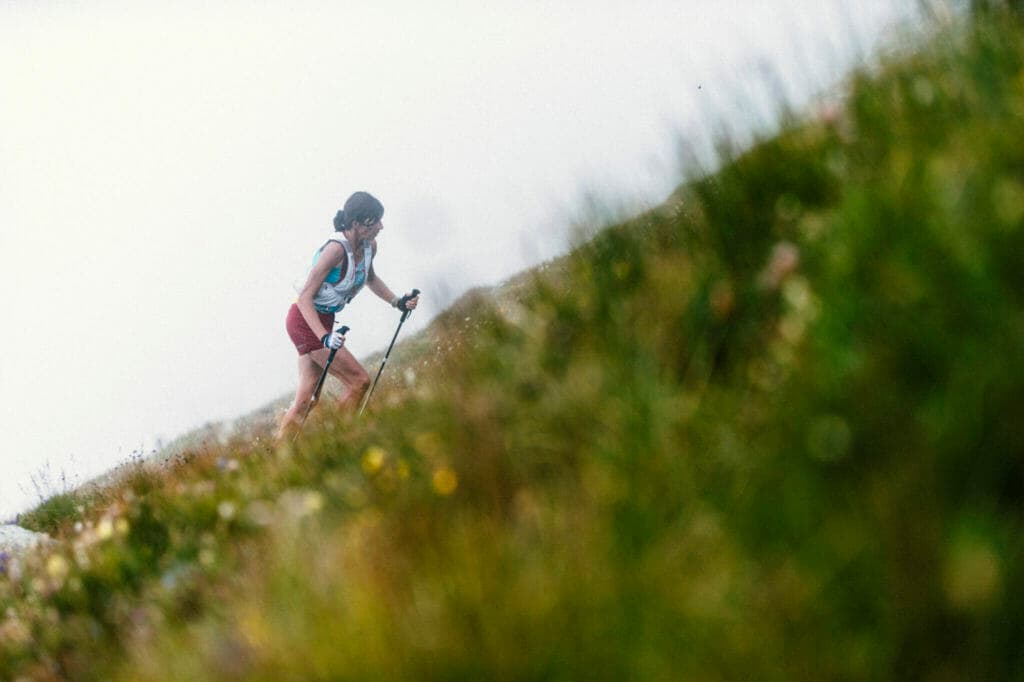
3. Embrace the Power Hike
We can’t emphasize this one enough. Many of our guides and experts, including Hillary Gerardi, Run the Alps ambassador and one of the world’s top Skyrunners, note that you don’t have to run uphill. In fact, you should expect to power hike most of the steep uphills to conserve your energy.
“If you go into a race expecting to run all the climbs, you won’t finish,” Hillary says. “Contrary to what you might see in pictures of runners racing up hills, most of us are walking as soon as it gets a little steep. Try to get comfortable power hiking uphill — it’s often much more efficient and even faster than trying to run.”
Doug puts it this way: “The goal is to get to the top of a climb and be rested, so you can really run. That’s the best strategy for a good overall time, because if you push really hard on an uphill, you’re going to gain perhaps two or three minutes over 500 or 1000 meters. But if you arrive at the top of the hill well rested, you’re going to feel great, and you’re going to be able to run much faster on the flats and downhills, and that’s going to be a huge time saver for you.”
Hillary Gerardi’s First Alps Trail Race Experience: A friend invited me to do a local 30 km trail race in Massif de la Chartreuse, north of Grenoble, so we signed up the morning of and, surprisingly, I won. The prize was a massive 12 pound leg of prosciutto. I got home and my husband was like, Oh, you need to do more of this sport!”
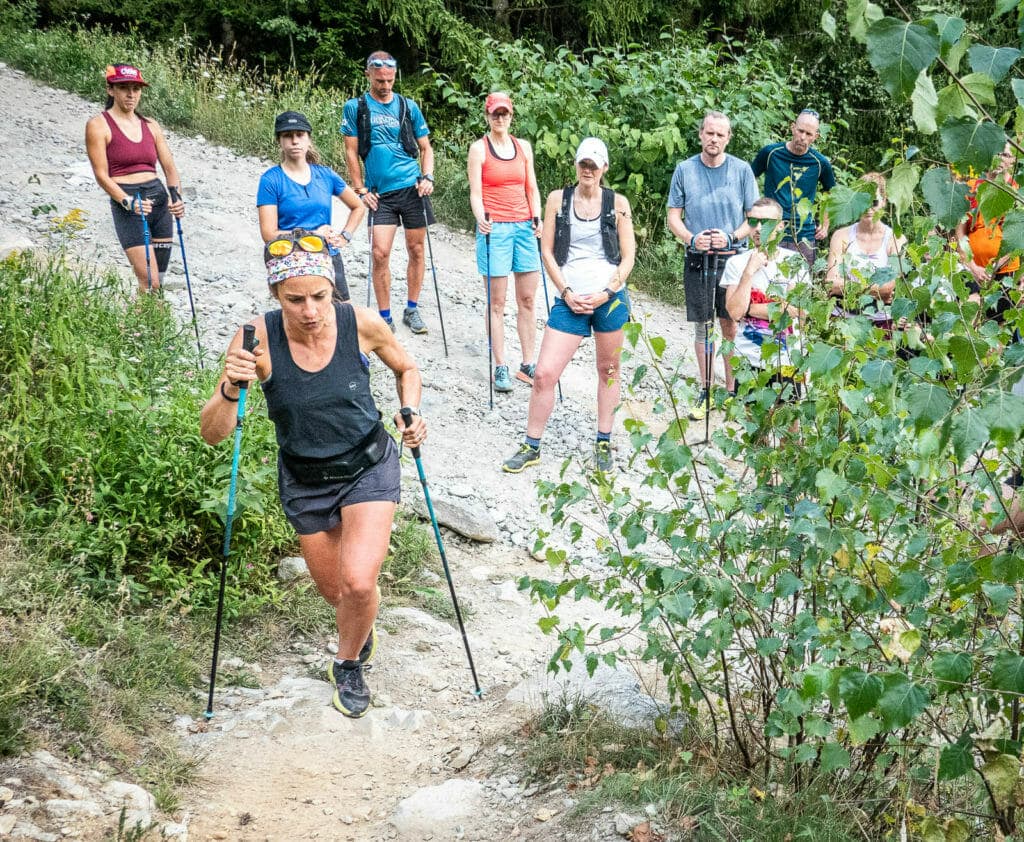
4. Give Poles a Chance
While trail running poles may not be de rigueur for many trail runners around the world, they’re practically essential for Alps trail running. You don’t have to use them, of course, but they can be very handy to help push your way up steep hills and to take pressure off your knees on the descents. They can definitely stop you from slipping and potentially falling on downhill sections.
You’ll want to practice running with poles before racing with them. During some of your training runs, take the poles out with you and get a feel for them: if they’re collapsible, practice putting them together, taking them apart, and storing them in your pack on the fly so you don’t lose time stopping to stow them in a race. They aren’t required and some people find them more cumbersome than useful, but give them a good college try before deciding they aren’t for you. One important note: A few of the busier races, like Switzerland’s famous Sierre-Zinal, don’t allow poles. So, check the race website before assuming poles are okay.
Learn more about using poles from coach and Run the Alps guide Sam Hill and Run the Alps ambassador and The North Face athlete Meg Mackenzie in this excerpt from a Run the Alps Rendez-Vous.
Sam Hill’s First Alps Trail Race Experience: My first race in the Alps was an 80km close to Annecy, France. I remember I carried way too much food, and I wasn’t prepared for the heat because I’m from the UK. At the start, I was a bit intimidated by how cool everyone looked, but once out on the trail, I was really surprised by how chatty people were. That put me at ease. Even though I didn’t speak much French, people were down to have a chat. And I got a really nice meal at the end, too!
5. Watch Out for the Pole-Nado
“Euro races tend to go out fast,” says Doug. “Watch out for what our Ambassador Katie Schide calls the pole-nado — the tornado of poles clicking all over the place as you’re leaving town.” The start of races in the Alps can be chaotic, with runners trying to get into a good position in advance of the upcoming single track.
Because poles can be more of a hazard than a help during race starts, consider starting with them stowed and watch out for other runners’ wayward poles. If you need to have them out, be mindful of where you are in the crowd, carry them vertically when in a tight group, and try to avoid skewering any fellow runners.
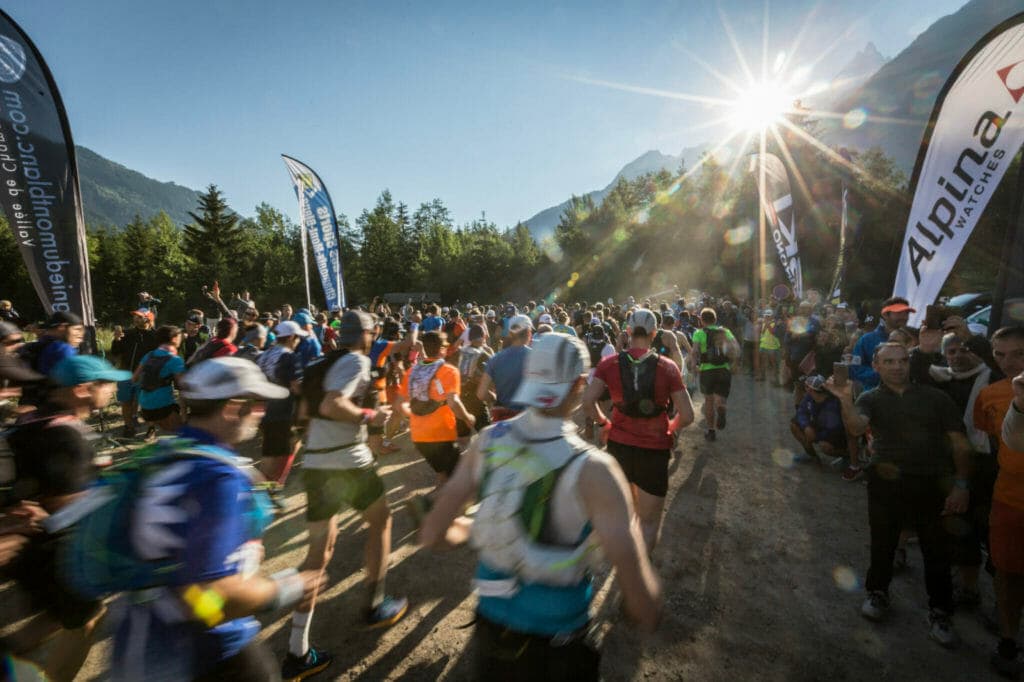
6. Don’t Go Out Too Fast (But Also Not Too Slow)
Finding the right speed to start out can be a tough balance for trail races in the Alps. On one hand, it can be easy to get caught up in the energy that is so infectious in Alp trail racing. You can start too fast, and run out of steam later on the course. On the other hand, if you start out too slowly, you can get stuck behind the conga line and not be able to go as fast as you’d like.
Try to keep a relaxed but confident pace and don’t sell yourself short expecting you’ll be the slowest on the course. Almost certainly, you won’t be what french trail runners call the “lanterne rouge.”
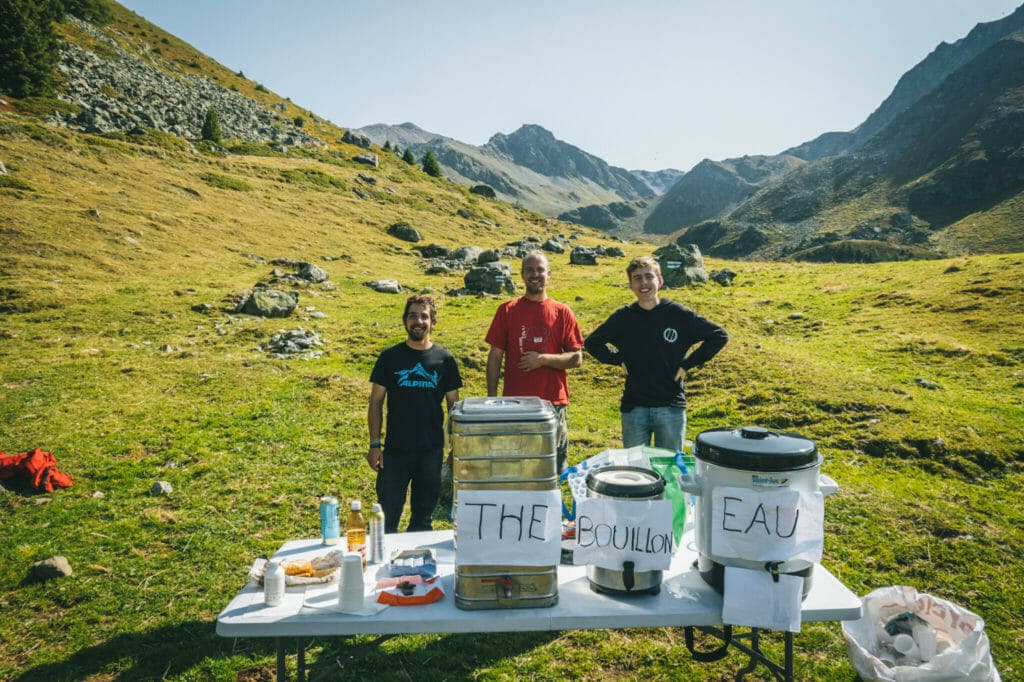
7. Enjoy the Aid Stations and Fuel Up
“It’s hard to eat and drink too much,” says Run the Alps guide Emily Geldard. “Enjoy the aid stations, I call them buffets!”
Alps Aid stations will often have an assortment of different sweet and savory whole food snacks like meat, cheese, chocolate, dried and fresh fruit, and bread or crackers. It can be common to forget to eat or drink on the trail, which can lead to cramping, stomach problems, and other less than ideal racing issues like heat exhaustion and simply running out of energy. Give yourself an extra minute or two at each aid station to savor awesome Coke, or a few pieces of dark chocolate. Those extra calories and fluid might just save you time and suffering later.
Emily Geldard’s First Alps Trail Race Experience: I did the Mont Blanc Marathon in 2011. I’ve always run a little bit and thought I’d do the 23km Cross du Mont-Blanc. But a couple of people said, with no real logic, “if you’re going to do that, you might as well just do the marathon.” Because I always did so much hiking, it wasn’t too much more than doing a big guiding day.
The average pace was a good bit slower than I expected. I literally started last, because I thought I was going to be the slowest runner out there. It turned out, there were people a lot slower than me and once on the trail, it was hard to pass anyone. It wasn’t until Vallorcine, halfway into the course, that I could actually run without being held up by other people going slower in front of me.
Towards the end, there were about 6 km left with about 350 meters of climbing, and I was feeling a bit tired. I drank some Coke and had this amazing boost of energy from the caffeine and sugar. So, I found the last bit of the course quite easy.
In the end, I ran the marathon an hour faster than I expected. It was just so exciting having all the supporters cheering me from along the course. The moral of the story, start easy and top up with a sugar boost to get through a low point, but also don’t underestimate yourself! Take a look at prior race results, and do your best to self-seed at the race start.
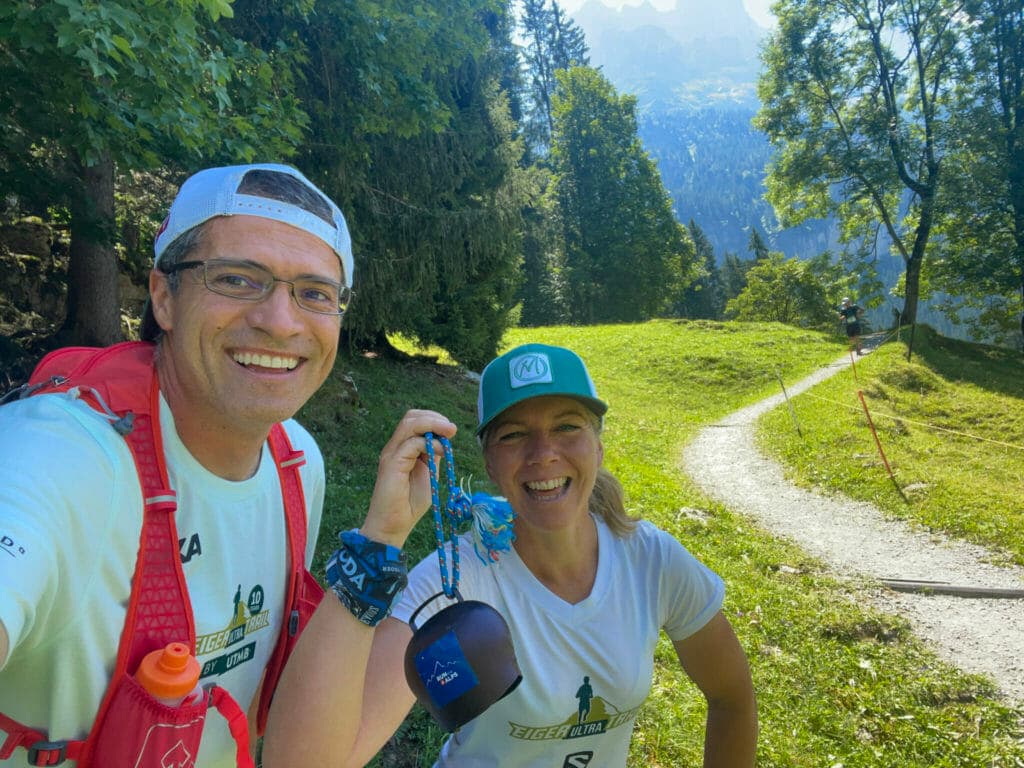
8. Don’t Forget to Have Fun
When you’re out on the trail, cursing yourself for signing up for this torture fest, don’t forget to look around and take in the Alps scenery. You’re in one of the most beautiful areas on the planet, surrounded by mountains, running world-class trails, and being a total badass. Savor the moment. Be proud of yourself. Fist-pump the air. Say thank you to the volunteers. Smile.
“There’s a rich tradition here, that goes way back,” says Doug. “It’s really part of the mainstream culture in the Alps, so take it all in and enjoy it. Villagers will be cheering for you and ringing bells. And it’s a good time.”
Ready to take a peek at the race options?
Run the Alps maintains a Race Finder database that is the largest english-language listing of trail races in the Alps.
We’ve got your start bib!
Did you know that some of our Run the Alps trips include the chance to race? Some guided and self-guided trips have the option to race in the Alps.
We have entries available to the oldest trail race in the Alps, DDM Trail as part of our September in the Alps trip.
